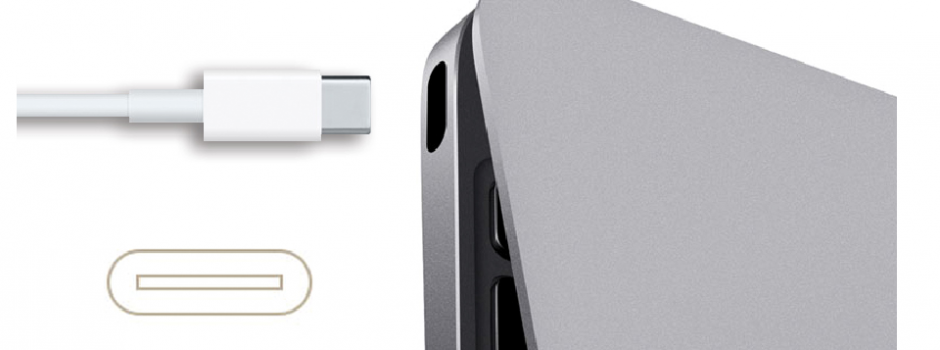What Is USB-C? An Explainer

The new Apple MacBook is 13.1mm at its thickest point, but that’s by the hinge. The rest of the laptop slims down to just 3.5mm. Any connector still needs some vertical clearance internally to connect to the motherboard and the rest of the system, as well as clearance for the physical plug itself. Traditional USB is just too darn thick, so the new USB-C connector helped Apple produce a slimmed-down MacBook.
What is USB-C?
USB-C is the new hot, industry standard connector and cable used to power the MacBook. The USB-C connector was developed by the USB Implementers Forum, the group of companies that has developed, certified, and shepherded the USB standard. It counts over 700 companies in its membership, including Apple, Dell, HP, Intel, Microsoft, and Samsung. This is important, because it’s more likely to be accepted by the majority of PC manufacturers. Contrast this with the Apple-promoted (and developed) Lightning and MagSafe connectors, which have limited acceptance beyond Apple products.
So, it’s like Micro USB?
Yes, the USB-C connector looks like a micro USB connector at first glance, but it’s slightly thicker to accommodate its best feature: like Lightning and MagSafe, the USB-C connector has no up or down orientation: as long as the connector is lined up right, you won’t have to flip the connector to plug it in! The cables also have the same connector on both ends, so you won’t ever have to figure out which end to plug in, unlike the older USB cables we’ve been using for the past 20 years.
Is this USB 3.1?
Yup, this is USB 3.1, which is theoretically twice as fast as USB 3.0. It’s fully compatible electrically with USB 3.0, though obviously it won’t plug in physically without an adapter. By the way, it’s about as fast as the original specs for Thunderbolt (10Gbps).
What about those adapters?
The MacBook doesn’t come with any adapters aside from the charger and a single USB-C cable. Others will be available separately. Apple’s USB-C to USB 3.0 adapter will be $19, but the one that will give you the most utility is the decidedly expensive $79 USB-C AV Multiport Adapter, which gives you USB 3.1 Gen 1 (the old connector), USB-C pass through for charging, and an HDMI port. Since USB-C is an industry standard connector, cheaper adapters are inevitable.
What else does it support?
The USB-C connector in the MacBook supports DisplayPort, HDMI, power, USB, and VGA. Notably absent is Thunderbolt, which is superseded by USB-C just as FireWire was replaced by Thunderbolt. USB-C to Ethernet is a no-brainer, but you may have to daisy chain an older USB-to-Ethernet adapter to your USB-C adapter for the time being.
And power?
The MacBook comes with a 29 Watt power supply, while the MacBook Pro 15-inch has an 85W MagSafe 2 power supply. Indications are that the USB standard supports at least 100W of power delivery, so it’s possible that USB-C could replace Lightning, MagSafe 2, and any other type of Apple power adapter in the future. Using USB to power a laptop isn’t new: look at the Lenovo Yoga 3 Pro $1,299.00 at Amazon, which has a full-sized USB 3.0 power connector.
So I’ll have to buy new cables and adapters?
Yes, unfortunately, you will. However, once you buy a cable or two, they will work with everything that supports USB-C, unlike the situation today, where pulling a mini USB cable out of your bag to charge your micro USB-equipped Samsung Galaxy S6 phone is almost as useless as grabbing a Nokia Pop-Port or Sony Ericsson charger.
We’re only scratching the surface of what USB-C can do, but one thing is certain: Apple is introducing the next generation of cross-platform connectors, just as it did with the original USB mouse and keyboard on the Apple iMac of 1998. USB-C truly is one cable to rule them all.
For more, check out the video above, as well as PCMag’s Hands On With the Apple’s New 12-Inch MacBook (video below) and Who Should Buy the New Apple MacBook? Also see our New MacBook vs. MacBook Pro and New MacBook vs. MacBook Air spec comparisons.
Source: pcmag.com
